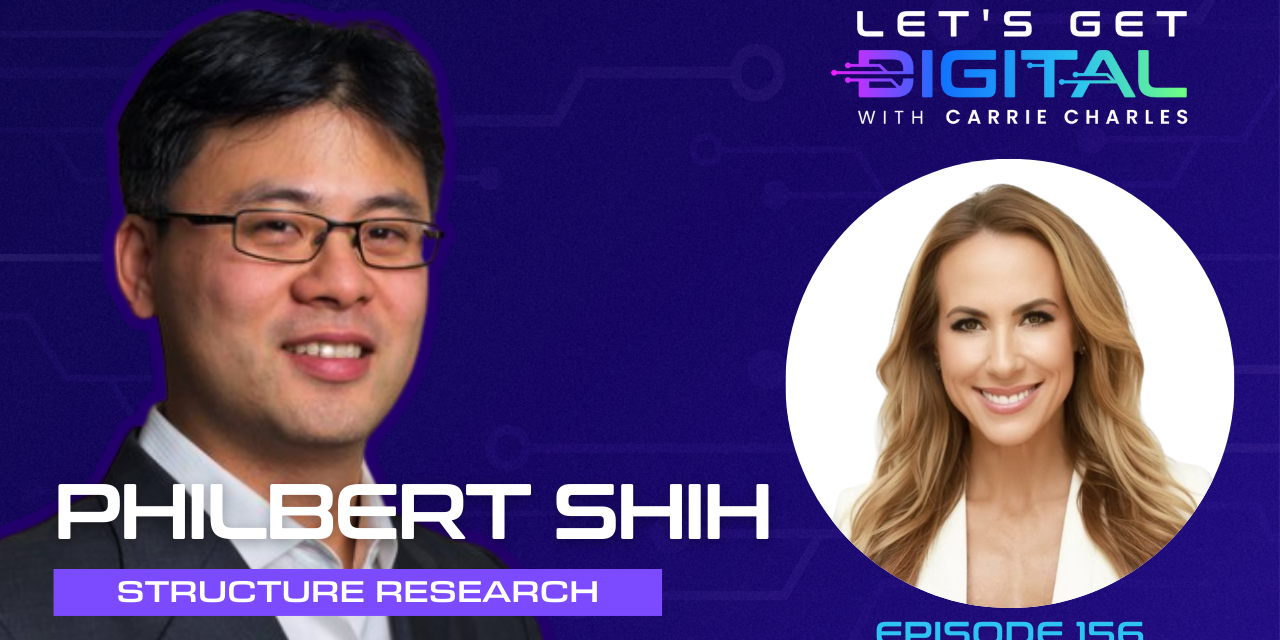In the latest episode of Let’s Get Digital, host Carrie Charles, CEO of tech staffing firm Broadstaff, sits down with Philbert Shih, founder and managing director of Structure Research, to talk about the state of digital infrastructure and why specialization matters. Phil shares how he left a comfortable role to build a focused research firm in 2011, choosing depth over size and covering one thing very well, compute-oriented infrastructure. His team tracks data centers, managed services, cloud, and the growing world of AI, publishing market intelligence that executives use to make decisions.
Structure Research positions itself between Wall Street views and deeply technical analysis. The firm does not try to cover every sector. It follows operators, visits sites, gathers primary data, and refines its numbers over time. That approach has also made the team a trusted subject matter partner on large transactions, including marquee deals in the Asia Pacific. Phil is clear that Structure Research is a research company first, and it takes pride in building its market share data from the ground up.
The conversation turns to infra/STRUCTURE, Structure Research’s 6th annual executive summit returning to Las Vegas on October 15 and 16, 2025. Phil describes the event as independent, content-led, and intentionally small. It draws senior operators, investors, and suppliers for practical discussions about the market. This year’s theme is Concurrence, a single word that reflects many moving parts at once: growth from cloud, new demand from AI, tight power supplies, shifting regulation, and fresh capital. The goal is not an expo floor. It is a forum where people who build and fund this industry can compare notes and challenge assumptions.
Asked about the major shifts he has witnessed, Phil points to three. First, the early 2000s reset that allowed today’s operators to form and scale. Second, the rise of public cloud after 2006, which reshaped demand patterns and pulled the industry into a global buildout. Third, the coming wave from AI. The impact is real, but still early. Training clusters are landing, and inference and ongoing model work will follow with their own footprints. That spillover will touch interconnection, networks, and services. Structure Research’s latest view has global colocation growing near 20 percent and likely above that in the next few years, up from about 13 and a half percent last year.
Are we building fast enough? Phil says it is hard to know because the shape of AI demand is still forming. The constraints are easier to see. Power is tight in mature markets. Land is competitive. Talent and build expertise are scarce. Regulation is shifting as new power sources are explored. He expects more collaboration between hyperscalers and operators, even if it can feel uneven in the moment. He also sees opportunity in what he calls edge hyperscale, single digit to tens of megawatts in second tier markets or distinct zones inside large metros that have been overlooked.
Looking ahead, Phil sees a long wave, not a quick spike. The cloud buildout still has a long way to run in many regions. AI will add to it rather than replace it. For people entering the field, his advice is direct. This industry rewards clear thinkers who like to solve hard problems. You can learn the building blocks. What sets people apart is the ability to analyze, work with others, and apply sound judgment.
You can learn more about Structure Research at structureresearch.io and explore the summit agenda at infrastructuresummit.io.
Tune in to the full episode of Let’s Get Digital featuring Pilbert Shih’s episode here.


